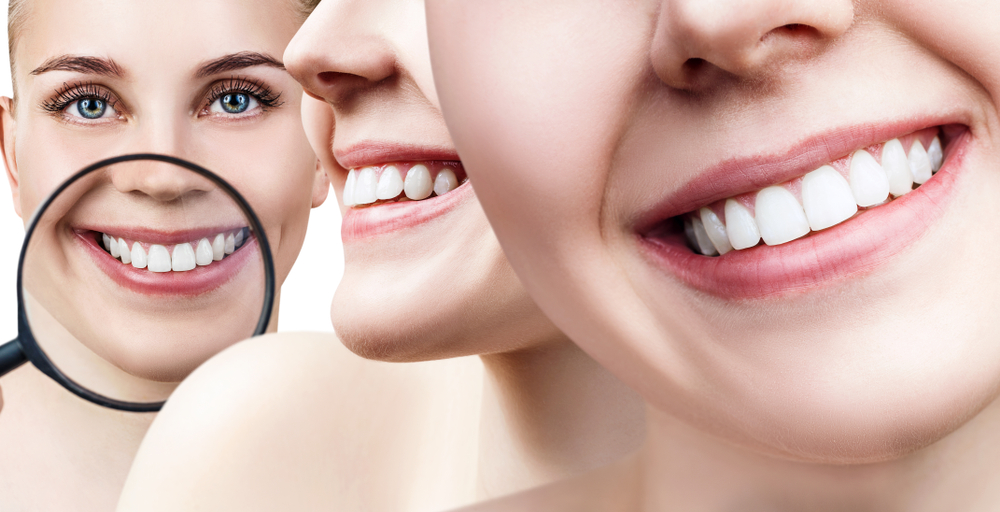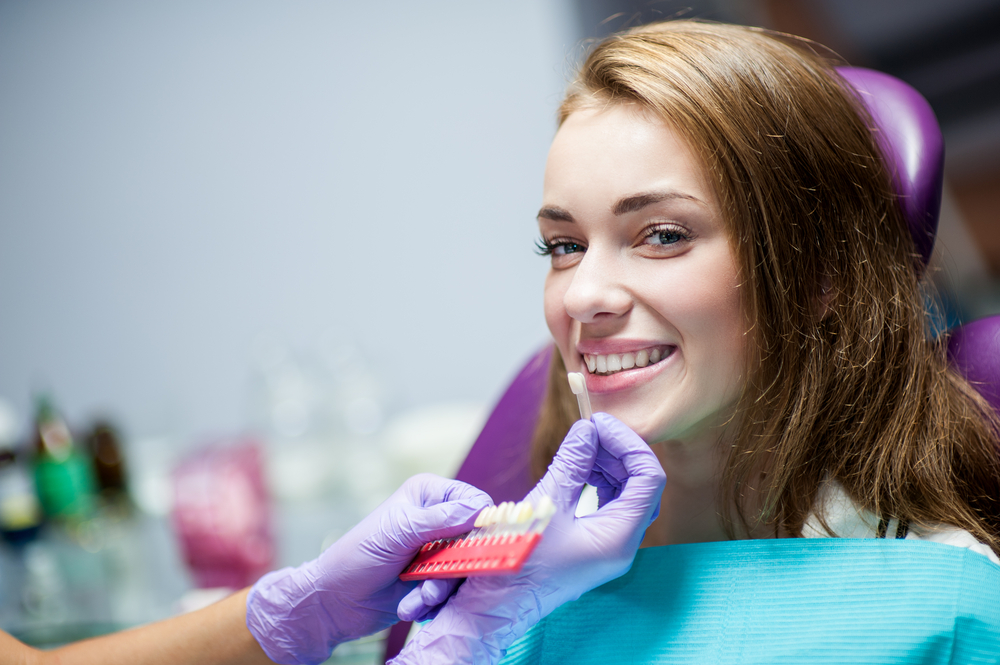What Is Teeth Whitening?
Tooth whitening is known as color restoration of a natural tooth or whitening of teeth beyond the natural color. Bleaching cannot make a complete color change, but it may help to lighten the existing shade.
Teeth whitening can also be done naturally and in an effective manner without harming the surface of the tooth. The natural process might help in lightning the real color shade. By merely removing surface stains caused by extrinsic factors, stains such as tea, coffee, red wine and tobacco, restoration of the underlying natural tooth shade is possible.

Types Of Teeth Whitening
The restoration of natural tooth shade can be achieved by having teeth cleaned by a dentist. You can also carry out the procedure at home, but there are specific risks associated while performing the task. So, to avoid all these problems, one must consult a professional dentist.
This process can also be followed at home by various oral hygiene methods. There are a variety of products marketed for home use for this purpose as well. Techniques include bleaching strips, bleaching pens, bleaching gels and laser tooth whitening. Dentists divide tooth discoloration into three types.
- Extrinsic discoloration: This usually occurs due to the consumption of stain-causing drinks or foods such as coffee, wine, and cola. Smoking also causes extrinsic stains.
- Intrinsic discoloration: It occurs when you see a yellow stain or darken teeth caused in the mouth.
- Age-related discoloration: This is a combination of extrinsic and intrinsic factors. In addition to stains caused by foods or smoking, the teeth gradually yellow over a period. The enamel, which is the main reason behind whitening and covering the teeth, gets thinner with age.
Why Would I Need My Teeth Whitened?
There are numerous reasons behind why you want to get your teeth whitened. Teeth can become discolored as we get old. Consuming food and drinks such as red wine, and blackcurrant can lead your teeth to be stained on the surface. Smoking can also be a reason for staining teeth. Tiny cracks, present in the teeth that have the potential to take up stains are significant causes for staining under the surface.
What does tooth whitening involve?
Professional bleaching that takes place with the help of your dental advisor is the most usual method of tooth whitening. Your dental team will tell you if you are suitable for the treatment or not. If suitable, then they will supervise you.
Primarily, the concerned dentist will place a rubber shield on your gums to protect them. Later, they will apply a whitening product to your teeth. The product will fit into your mouth like a mouth guard and protect the teeth. Symptoms may also include stains on the enamel or a yellow tint on the teeth.
SEE ALSO: Top 6 Tips To Help You In Taking Care Of Your Smile Effectively
How Long Does The Treatment Take?
It requires three to four weeks for the treatment to be done. Before beginning the treatment, you must consult your dentist first. The reason behind that is your dental team will make a mouth guard to protect your teeth and will take impressions of your teeth in the very first appointment once you have decided to go for the treatment.
After the dental team has started the treatment, you will need to continue the same treatment at home by taking care of your teeth. The treatment you need to follow afterward is regularly applying the whitening product over 2 to 4 weeks for 30 minutes to an hour. Sometimes, many stains formed are permanent. Teeth have to be treated with a particular kind of bleaching gel.

Risks Associated While Teeth Whitening
Whitening has minimal chances to cause serious side effects. The risks might be that sometimes people’s teeth may become more sensitive for a short span. Some might get gum irritation as well. Dr. Scott Simpson, an expert Tigard Dentist, highly recommends that women should not have their teeth whitened while pregnant because the effects of the whitening materials on the development of the fetus are not known yet. The procedure should be postponed until after delivery.
How To Whiten Teeth?
- If you do not have enough money for the treatment, the best solution is using whitening toothpaste. Toothpaste will not cost a lot of money. You can buy it at a local supermarket or any medical store.
- Choose the toothpaste that has the Dental Association (DA) Seal of Approval. The toothpaste approved by the DA uses abrasive particles to polish teeth. Along with it they also mix chemicals that bind to stains and remove them.
Hence, now you know about teeth whitening and its related issues. Always remember to consult the doctor before trying the treatment. Especially for pregnant women, it is necessary to avoid such treatment as it may severely harm the child.

